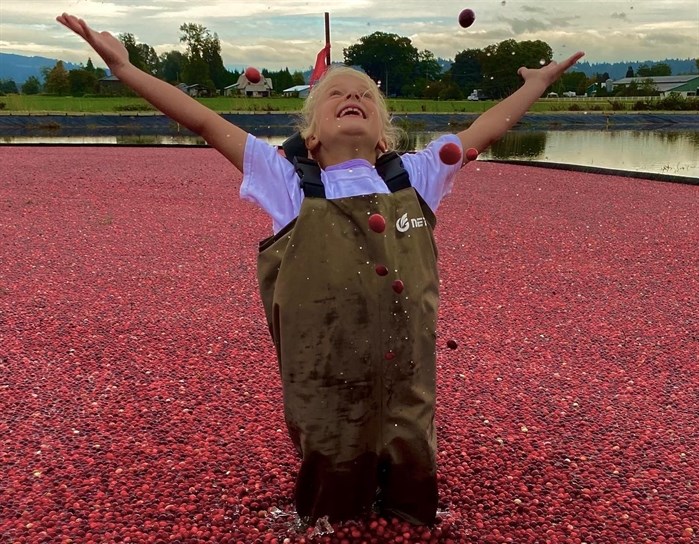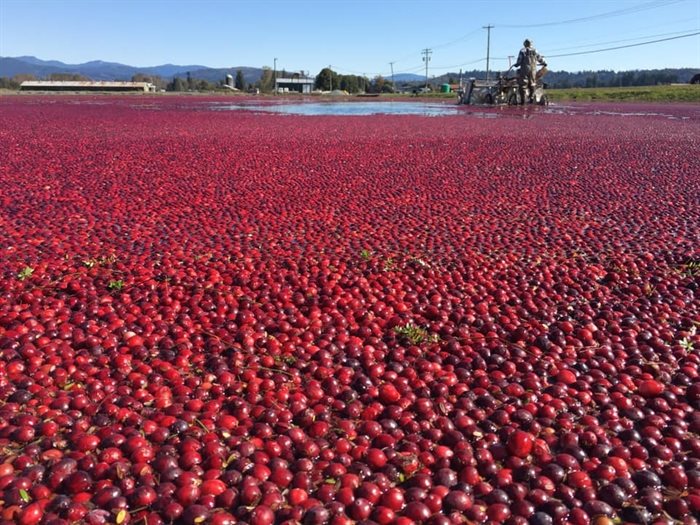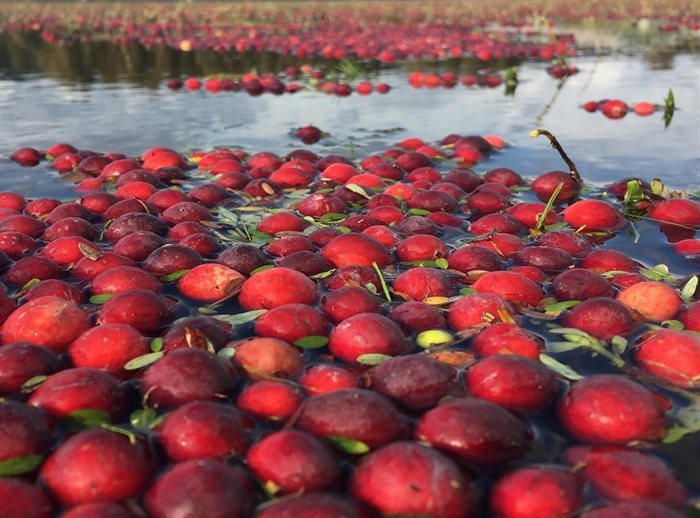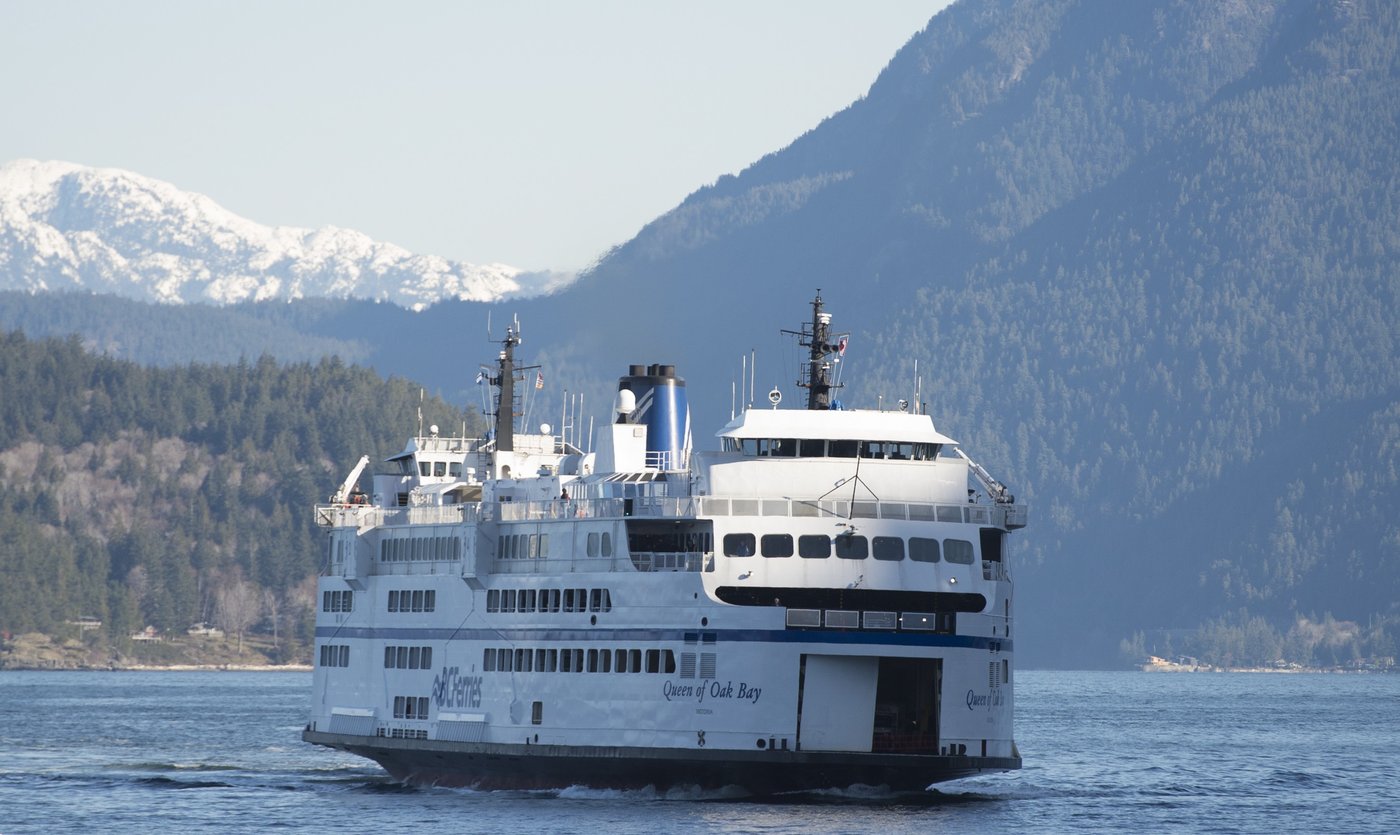iN HOLIDAY: B.C. cranberries from farm to Christmas plate

Ruby red cranberries can be seen floating in bogs on farms in the Lower Mainland during the harvest in the fall, in spectacular splashes of colour.
The bright gems appear again in the winter as tart additions to our traditional Thanksgiving and Christmas meals and baked treats.
“I never get tired of the site of the berries when they are floating on the bog, it is stunning,” said farm owner and operator Brian Dewit of Riverside Cranberry Farm near Langley.
Cranberries can be grown in natural or manmade wetland bogs. Dewit created his 35-acre bog out of a grass field he levelled and covered with soil and sawdust.
It takes a lot of work to grow and harvest the berries in time for the holiday season, and there are factors farmers must carefully manage.
“The nice thing about the cranberry is it is a perennial, it can be a lifetime plant if looked after properly,” Dewit said. “It takes about three years to get a plant to start producing fruit. They grow long runners under the soil and the plants spread out. Once you have that established, there is fruit production.”
READ MORE: The map of the best holiday lights in Kelowna 2022
In the spring, the fields are drained and diked and a drainage system is put in place. The plants are mechanically pruned, leaving only fruit bearing upright plants. Once they are blooming, the plants are fertilized. In mid-September, the farmers start preparing for the harvest season.
“In farming it is never easy, it is always different every year,” Dewit said. “If there was a formula to doing it and a guaranteed income, everyone would do it.”
Of all the challenges cranberry farmers can face, Dewit said environment factors are the hardest for his team.
“A cold June will set back pollination and sometimes bee health is not the best,” he said. “We bring a lot of hives every year. Frost is a big one. If we get a strong frost in the bud or bloom period it can do a lot of damage. We use sprinklers at night to freeze the plants, which protects them, while the frost will cause the middle of the berries to liquefy.”
Too much heat can be dangerous for the plants too. Temperatures over 35 Celsius can cause issues with the fruits. Pests also put pressure on the plants.
“Blackheaded fireworms are a challenge,” he said. “Two or three generations will hatch in a season so we need to monitor and control that throughout. These are all factors we know how to manage.”
The practise of floating the berries to the surface of water at harvest season came about in the early 19th century and is called a wet harvest. Prior to that, farmers were dry-harvesting cranberries from vines, requiring many workers to pick the berries on dry land.
It only takes a few people to scoop the floating crop off the top of the flooded bog.
“Every cranberry field has a dike around it,” Dewit said. “We flood the field with eight inches of water and run a harvest harrow through it to separate the berries from the plants. The berries have air pockets in them so they float to the surface. We bring the water up to 15 inches deep and corral the berries into a big circle, then use a vacuum pump system to bring them out.”
READ MORE: iN HOLIDAY: Salmon Arm winery making traditional winter cocktail mulled wine
The berries go through machinery to separate them from any rotten berries, leaves and stems. They're loaded into trucks to go to processing facilities.
The majority of the farm’s harvest goes to wholesalers, but the farm keeps a portion for their own fresh market products they create and sell onsite at their retail store called The Bog.
“We make and sell cranberry sauce, pure cranberry juice, and a cranberry apple cider,” Dewit said. “We have freeze dried cranberries, dried cranberries and pure cranberry powder made from left over mash when we press the juice.”
Dewit said the cranberry sauce made by his farm is a top seller, especially at Thanksgiving and Christmas.
Riverside Cranberry Farm products can be found in major grocery chains in Kamloops and the Okanagan.
Go here for more information on Riverside Cranberry Farm.
To contact a reporter for this story, email Shannon Ainslie or call 250-819-6089 or email the editor. You can also submit photos, videos or news tips to the newsroom and be entered to win a monthly prize draw.
We welcome your comments and opinions on our stories but play nice. We won't censor or delete comments unless they contain off-topic statements or links, unnecessary vulgarity, false facts, spam or obviously fake profiles. If you have any concerns about what you see in comments, email the editor in the link above.




